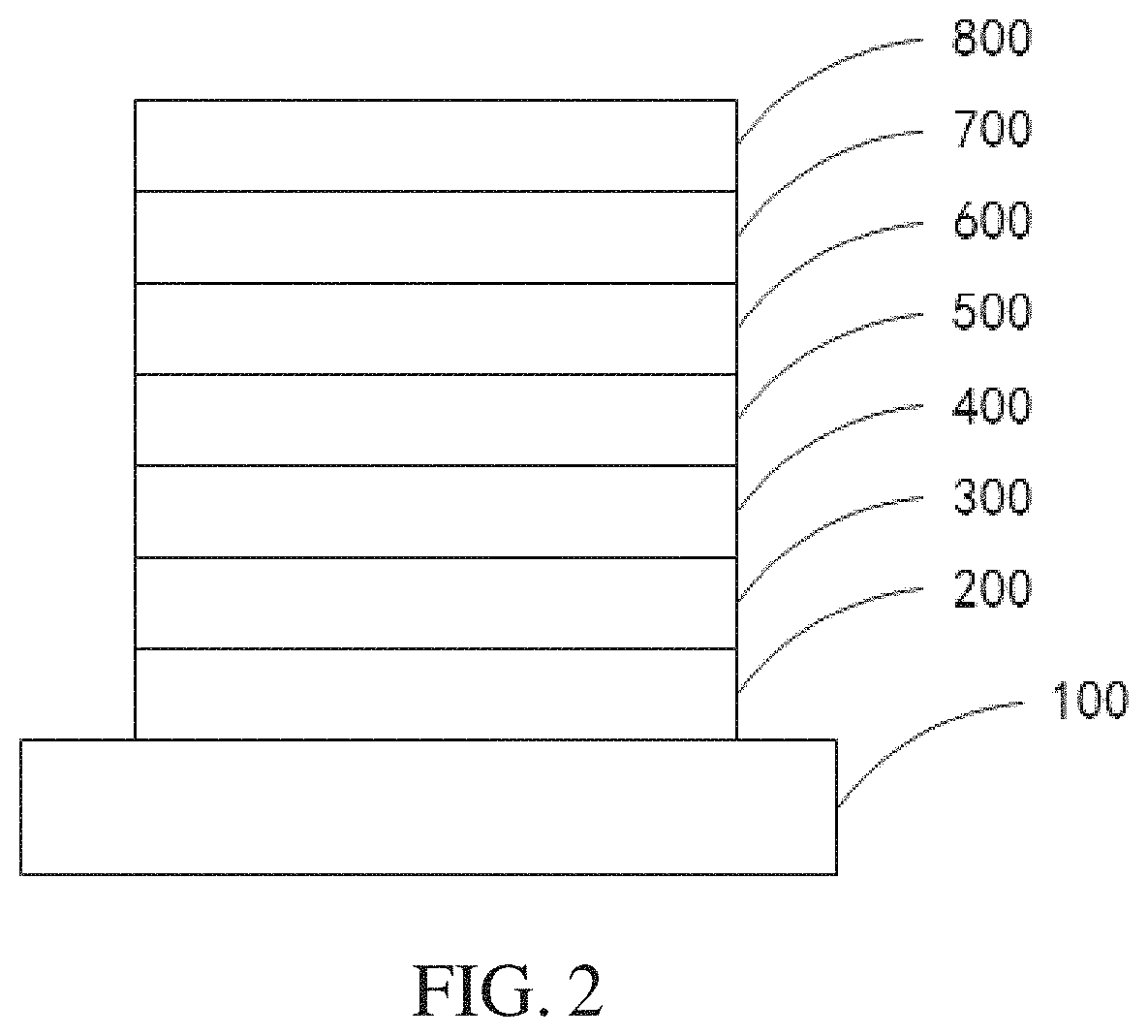Thermally activated delayed fluorescent and synthesizing method thereof
a technology of delayed fluorescent and thermal activation, which is applied in the direction of luminescent compositions, luminescent compositions, organic chemistry, etc., can solve the problems of limiting the application of fluorescent electroluminescent devices, heavy metal complex phosphorescent materials in terms of blue light materials that still need to be broken, and achieve low luminous efficiency
- Summary
- Abstract
- Description
- Claims
- Application Information
AI Technical Summary
Benefits of technology
Problems solved by technology
Method used
Image
Examples
embodiment 1
[0087]A chemical structural formula of the thermally activated delayed fluorescent material in the present preferred embodiment is:
[0088]
[0089]A synthesizing method of the thermally activated delayed fluorescent material includes:
[0090]In a step S10, 4-bromo-4′-iodo-diphenyl sulfone, a first reactant, and a first catalyst are added to a first container, and a first heat treatment is performed to obtain a first reaction solution.
[0091]The first container in this embodiment is a 100 ml two-necked bottle. Firstly, 4-bromo-4′-iodo-diphenyl sulfone (4.21 g, 10 mmol) and carbazole (1.67 g, 10 mmol) are separately added to the two openings. Then, cesium carbonate CsCO3 (2.31 g, 12 mmol), cuprous iodide CuI (0.11 g, 0.6 mmol), and 18-crown-6 ether (52 mg, 0.2 mmol) are added to the first container. Then, the first container is vacuumed three times and nitrogen or an inert gas is introduced into the first container to prevent water and oxygen in the air from affecting the reaction. Then, 20 ...
embodiment 2
[0118]A chemical structural formula of the thermally activated delayed fluorescent material in the present embodiment is:
[0119]
[0120]A synthesizing method of the thermally activated delayed fluorescent material includes:
[0121]In a step S10, 4-bromo-4′-iodo-diphenyl sulfone, a first reactant, and a first catalyst are added to a first container, and a first heat treatment is performed to obtain a first reaction solution.
[0122]The first container in this embodiment is a 100 ml two-necked bottle. Firstly, 4-bromo-4′-iodo-diphenyl sulfone (4.21 g, 10 mmol) and 3,6-dimethylcarbazole (1.67 g, 10 mmol) are separately added to the two openings. Then, CsCO3 (2.31 g, 12 mmol), CuI (0.11 g, 0.6 mmol), and 18-crown-6 ether (52 mg, 0.2 mmol) are added to the first container. Then, the first container is vacuumed three times and nitrogen or an inert gas is introduced into the first container to prevent water and oxygen in the air from affecting the reaction. Then, 20 ml of N,N-dimethylpropenyl ure...
embodiment 3
[0147]A chemical structural formula of the thermally activated delayed fluorescent material in the present embodiment is:
[0148]
[0149]A synthesizing method of the thermally activated delayed fluorescent material includes:
[0150]In a step S10, 4-bromo-4′-iodo-diphenyl sulfone, a first reactant, and a first catalyst are added to a first container, and a first heat treatment is performed to obtain a first reaction solution.
[0151]The first container in this embodiment is a 100 ml two-necked bottle. Firstly, 4-bromo-4′-iodo-diphenyl sulfone (4.21 g, 10 mmol) and 3,6-diphenylcarbazole (3.19 g, 10 mmol) are separately added to the two openings. Then, CsCO3 (2.31 g, 12 mmol), CuI (0.11 g, 0.6 mmol), and 18-crown-6 ether (52 mg, 0.2 mmol) are added to the first container. Then, the first container is vacuumed three times and nitrogen or an inert gas is introduced into the first container to prevent water and oxygen in the air from affecting the reaction. Then, 20 ml of N,N-dimethylpropenyl ure...
PUM
| Property | Measurement | Unit |
|---|---|---|
| temperature | aaaaa | aaaaa |
| temperature | aaaaa | aaaaa |
| IQE | aaaaa | aaaaa |
Abstract
Description
Claims
Application Information
 Login to View More
Login to View More - R&D
- Intellectual Property
- Life Sciences
- Materials
- Tech Scout
- Unparalleled Data Quality
- Higher Quality Content
- 60% Fewer Hallucinations
Browse by: Latest US Patents, China's latest patents, Technical Efficacy Thesaurus, Application Domain, Technology Topic, Popular Technical Reports.
© 2025 PatSnap. All rights reserved.Legal|Privacy policy|Modern Slavery Act Transparency Statement|Sitemap|About US| Contact US: help@patsnap.com



